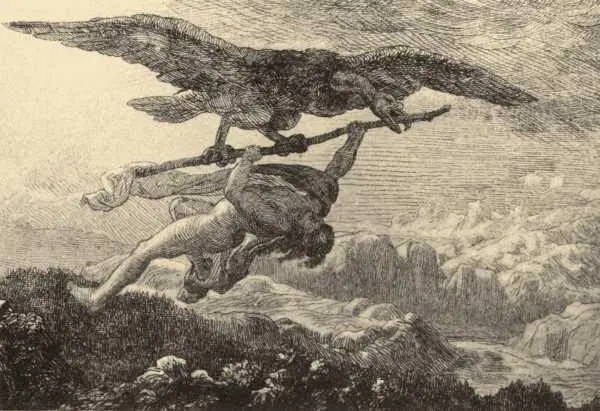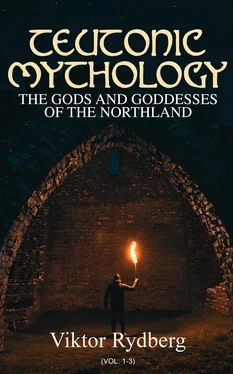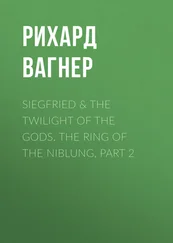Viktor Rydberg - Teutonic Mythology - The Gods and Goddesses of the Northland (Vol. 1-3)
Здесь есть возможность читать онлайн «Viktor Rydberg - Teutonic Mythology - The Gods and Goddesses of the Northland (Vol. 1-3)» — ознакомительный отрывок электронной книги совершенно бесплатно, а после прочтения отрывка купить полную версию. В некоторых случаях можно слушать аудио, скачать через торрент в формате fb2 и присутствует краткое содержание. Жанр: unrecognised, на английском языке. Описание произведения, (предисловие) а так же отзывы посетителей доступны на портале библиотеки ЛибКат.
- Название:Teutonic Mythology: The Gods and Goddesses of the Northland (Vol. 1-3)
- Автор:
- Жанр:
- Год:неизвестен
- ISBN:нет данных
- Рейтинг книги:4 / 5. Голосов: 1
-
Избранное:Добавить в избранное
- Отзывы:
-
Ваша оценка:
- 80
- 1
- 2
- 3
- 4
- 5
Teutonic Mythology: The Gods and Goddesses of the Northland (Vol. 1-3): краткое содержание, описание и аннотация
Предлагаем к чтению аннотацию, описание, краткое содержание или предисловие (зависит от того, что написал сам автор книги «Teutonic Mythology: The Gods and Goddesses of the Northland (Vol. 1-3)»). Если вы не нашли необходимую информацию о книге — напишите в комментариях, мы постараемся отыскать её.
One of Rydberg's mythological theories developed in this book is that of a vast World Mill which rotates the heavens, which he believed was an integral part of Old Norse mythic cosmology.
Teutonic Mythology: The Gods and Goddesses of the Northland (Vol. 1-3) — читать онлайн ознакомительный отрывок
Ниже представлен текст книги, разбитый по страницам. Система сохранения места последней прочитанной страницы, позволяет с удобством читать онлайн бесплатно книгу «Teutonic Mythology: The Gods and Goddesses of the Northland (Vol. 1-3)», без необходимости каждый раз заново искать на чём Вы остановились. Поставьте закладку, и сможете в любой момент перейти на страницу, на которой закончили чтение.
Интервал:
Закладка:
 GIANT THJASSE, IN THE GUISE OF AN EAGLE, CARRIES OFF LOKE. (From an etching by Lorenz Frölich.) Thjasse was known as the storm-giant who having been born in deformity was ever seeking golden apples from Idun to cure his ugliness. Upon one occasion assuming the form of an eagle he interrupted a feast of Odin, Honer and Loke and when the latter attempted to strike the voracious bird with a stake found himself fastened to both stake and eagle and was borne away shrieking for mercy. Thjasse promised to release Loke if he would bring to him Idun and her golden apples. Loke in fulfillment of his promise beguiled Idun out of Asgard whereupon Thjasse in the form of an eagle seized the goddess in his talons and bore her away to his castle, Thrymheim. He was soon afterwards killed by the gods, and Idun was released.
GIANT THJASSE, IN THE GUISE OF AN EAGLE, CARRIES OFF LOKE. (From an etching by Lorenz Frölich.) Thjasse was known as the storm-giant who having been born in deformity was ever seeking golden apples from Idun to cure his ugliness. Upon one occasion assuming the form of an eagle he interrupted a feast of Odin, Honer and Loke and when the latter attempted to strike the voracious bird with a stake found himself fastened to both stake and eagle and was borne away shrieking for mercy. Thjasse promised to release Loke if he would bring to him Idun and her golden apples. Loke in fulfillment of his promise beguiled Idun out of Asgard whereupon Thjasse in the form of an eagle seized the goddess in his talons and bore her away to his castle, Thrymheim. He was soon afterwards killed by the gods, and Idun was released.
Idun, who possesses "the Asas' remedy against old age," and keeps the apples which symbolise the ever-renewing and rejuvenating force of nature, is carried away by Thjasse to a part of the world inaccessible to the gods. The gods grow old, and winter extends its power more and more beyond the limits prescribed for it in creation. Thjasse, who before was the friend of the gods, is now their irreconcilable foe. He who was the promoter of growth and the benefactor of nature—for Sif's golden locks, and Skidbladner, belonging to the god of fertility, doubtless are symbols thereof—is changed into "the mightiest foe of earth," dolg ballastan vallar (Haustl., 6), and has wholly assumed the nature of a giant.
At the same time, with the approach of the great winter, a terrible earthquake takes place, the effects of which are felt even in heaven. The myth in regard to this is explained in No. 81. In this explanation the reader will find that the great earthquake in primeval time is caused by Thjasse's kinswomen on his mother's side (the Grotte-song)—that is, by the giantesses Fenja and Menja, who turned the enormous world-mill, built on the foundations of the lower world, and working in the depths of the sea, the prototype of the mill of the Grotte-song composed in Christian times; that the world-mill has a möndull , the mill-handle, which sweeps the uttermost rim of the earth, with which handle not only the mill-stone but also the starry heavens are made to whirl round; and that when the mill was put in so violent a motion by the angry giantesses that it got out of order, then the starry constellations were also disturbed. The ancient terrible winter and the inclination of the axis of heaven have in the myth been connected, and these again with the close of the golden age. The mill had up to this time ground gold, happiness, peace, and good-will among men; henceforth it grinds salt and dust.
The winter must of course first of all affect those people who inhabited the extensive Svithiod north of the original country and over which another kinsman of Heimdal, the first of the race of Skilfings or Ynglings, ruled. This kinsman of Heimdal has an important part in the mythology, and thereof we shall give an account in Nos. 89, 91, 110, 113–115, and 123. It is there found that he is the same as Ivalde, who, with a giantess, begot the illegitimate children Ide, Urner, and Thjasse. Already before his sons he became the foe of the gods, and from Svithiod now proceeds, in connection with the spreading of the fimbul-winter, a migration southward, the work at the same time of the Skilfings and the primeval artists. The list of dwarfs in Völuspa has preserved the record of this in the strophe about the artist migration from the rocks of the hall ( Salar steinar ) and from Svarin's mound situated in the north (the Völuspa strophe quoted in the Younger Edda; cp. Saxo., Hist. , 32, 33, and Helg. Hund., i. 31, ii. to str. 14). The attack is directed against aurvanga sjöt , the land of the clayey plains, and the assailants do not stop before they reach Jöruvalla the Jara plains, which name is still applied to the south coast of Scandinavia (see No. 32). In the pedigree of these emigrants—
their er sóttu
frà Salar steina (or Svarins haugi)
aurvanga sjot
til Jöruvalla—
occur the names Álfr and Yngvi , who have Skilfing names; Fjalarr , who is Ivalde's ally and Odin's enemy (see No. 89); Finnr , which is one of the several names of Ivalde himself (see No. 123); Frosti , who symbolises cold; Skirfir , a name which points to the Skilfings; and Virfir , whom Saxo ( Hist. Dan. , 178, 179) speaks of as Huyrvillus , and the Icelandic records as Virvill and Vifill (Fornalders. ii. 8; Younger Edda, i. 548). In Fornalders. Vifill is an emigration leader who married to Loge's daughter Eymyrja (a metaphor for fire—Younger Edda, ii. 570), betakes himself from the far North and takes possession of an island on the Swedish coast. That this island is Oland is clear from Saxo, 178, where Huyrvillus is called Holandiæ princeps . At the same time a brother-in-law of Virfir takes possession of Bornholm, and Gotland is colonised by Thjelvar ( Thjálfi of the myth), who is the son of Thjasse's brother (see Nos. 113, 114, 115). Virfir is allied with the sons of Finnr ( Fyn —Saxo, Hist. , 178). The saga concerning the emigration of the Longobardians is also connected with the myth about Thjasse and his kinsmen (see Nos. 112–115).
From all this it appears that a series of emigration and colonisation tales have their origin in the myth concerning the fimbul-winter caused by Thjasse and concerning the therewith connected attack by the Skilfings and Thjasse's kinsmen on South Scandinavia, that is, on the clayey plains near Jaravall, where the second son of Heimdal, Skjold-Borgar, rules. It is the remembrance of this migration from north to south which forms the basis of all the Teutonic middle-age migration sagas. The migration saga of the Goths, as Jordanes heard it, makes them emigrate from Scandinavia under the leadership of Berig. ( Ex hac igitur Scandza insula quasi officina gentium aut certe velut vagina nationum cum rege suo Berig Gothi quondam memorantur egressi—De Goth. Orig., c. 4. Meminisse debes, me de Scandzæ insulæ gremio Gothos dixisse egressos cum Berich suo rege —c. 17.) The name Berig, also written Berich and Berigo, is the same as the German Berker, Berchtung, and indicates the same person as the Norse Borgarr . With Berig is connected the race of the Amalians; with Borgar the memory of Hamal (Amala), who is the foster-brother of Borgar's son (cp. No. 28 with Helge Hund., ii.). Thus the emigration of the Goths is in the myth a result of the fate experienced by Borgar and his people in their original country. And as the Swedes constituted the northernmost Teutonic branch, they were the ones who, on the approach of the fimbul-winter, were the first that were compelled to surrender their abodes and secure more southern habitations. This also appears from saga fragments which have been preserved; and here, but not in the circumstances themselves, lies the explanation of the statements, according to which the Swedes forced Scandinavian tribes dwelling farther south to emigrate. Jordanes (c. 3) claims that the Herulians were driven from their abode in Scandza by the Svithidians, and that the Danes are of Svithidian origin—in other words, that an older Teutonic population in Denmark was driven south, and that Denmark was repeopled by emigrants from Sweden. And in the Norse sagas themselves, the centre of gravity, as we have seen, is continually being moved farther to the south. Heimdal, under the name Scef-Skelfir, comes to the original inhabitants in Scania. Borgar, his son, becomes a ruler there, but founds, under the name Skjold, the royal dynasty of the Skjoldungs in Denmark. With Scef and Skjold the Wessex royal family of Saxon origin is in turn connected, and thus the royal dynasty of the Goths is again connected with the Skjold who emigrated from Scandza, and who is identical with Borgar. And finally there existed in Saxo's time mythic traditions or songs which related that all the present Germany came under the power of the Teutons who emigrated with Borgar; that, in other words, the emigration from the North carried with it the hegemony of Teutonic tribes over other tribes which before them inhabited Germany. Saxo says of Skjold-Borgar that omnem Alamannorum gentem tributaria ditione perdomuit ; that is, "he made the whole race of Alamanni tributary." The name Alamanni is in this case not to be taken in an ethnographical but in a geographical sense. It means the people who were rulers in Germany before the immigration of Teutons from the North.
Читать дальшеИнтервал:
Закладка:
Похожие книги на «Teutonic Mythology: The Gods and Goddesses of the Northland (Vol. 1-3)»
Представляем Вашему вниманию похожие книги на «Teutonic Mythology: The Gods and Goddesses of the Northland (Vol. 1-3)» списком для выбора. Мы отобрали схожую по названию и смыслу литературу в надежде предоставить читателям больше вариантов отыскать новые, интересные, ещё непрочитанные произведения.
Обсуждение, отзывы о книге «Teutonic Mythology: The Gods and Goddesses of the Northland (Vol. 1-3)» и просто собственные мнения читателей. Оставьте ваши комментарии, напишите, что Вы думаете о произведении, его смысле или главных героях. Укажите что конкретно понравилось, а что нет, и почему Вы так считаете.











